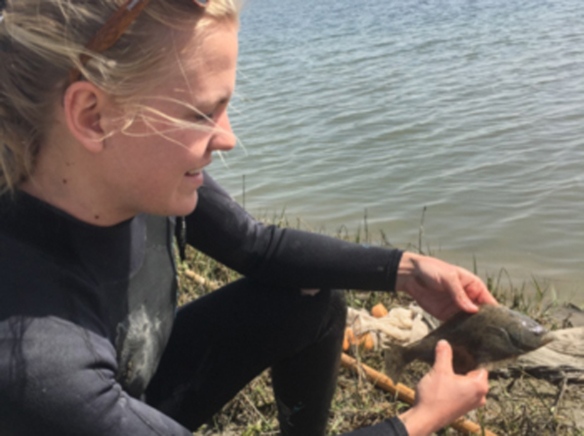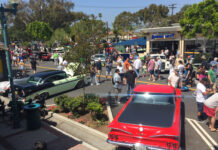
By Chloe Van Grootheest
When you think of wetland or marsh habitat, you might think of smelly, muddy environments home to swamp monsters.
While some of those things may be true, wetlands like the Seal Beach National Wildlife Refuge are actually quite dynamic and beautifully intricate habitats.
Their complexity stems from the fact that everything is constantly changing, from the water to the sediment, and the fish communities to the migratory birds. Within a single day, a wetland can transform from an open body of water that slowly exposes the winding, curvy tidal creeks, and lush green marsh vegetation as the tide drops.
Over time, these changing factors have evolutionarily led to some fascinating creatures that thrive within our local wetlands. But what happens when you start changing the habitat? What happens if you change the way the water moves, or the creatures that live there? That is precisely one of the questions I am interested in as a researcher in the Wetland Ecology Lab at the California State University of Long Beach.
Our research projects on the Seal Beach NWR span all things wetlands from understanding what critters live in the mud to how the marsh vegetation provides important habitat for small mammals. Every year of research on the marsh unearths new and fascinating information.
We have learned how alterations to water movement between two areas of the marsh can influence the fish communities found there. As part of a mitigation project for loss of wetland habitat in Long Beach, the Seal Beach wetland habitat was extended through excavated ponds connected to the Anaheim Bay tidal flow through underground concrete tunnels called culverts.
Our research shows that this change in water flow between the connected habitats likely results in different tide regime and temperature ranges across the adjacent habitats. These differences in characteristics have likely facilitated differential distribution of a native and nonnative goby species.
The persistence of nonnative species can become detrimental as they may exploit resources, outcompete native species, and ultimately lower overall habitat health. Therefore, we have learned that small, and seemingly unimportant changes to dynamic wetland habitat can influence the habitat characteristics as well as the animals that lives there.
Aside from human-induced habitat changes, the Seal Beach NWR is also subject to the stresses of land subsidence and climatic changes such as sea level rise. Both of these changes place the lives of our terrestrial animals at risk, including our endangered Ridgway’s rail. In 2016, researchers and the Fish and Wildlife Service worked together to spray sediment on a plot of marsh land in order to raise the elevation of the land in attempt to build resiliency against the rising sea levels. Our researchers have since then monitored the critters that are found within the sediment over time as this can be a good method to gauge how well the marsh is recovering. We have seen the emergence of many fly and beetle larvae in the early years, followed by a variety of worms, snails and crustaceans as the habitat becomes more suitable. Over the last five years, not only have we seen the recovery of our marsh critters, but also the formation of the winding tidal creeks and ponds, sprouting of marsh vegetation including cordgrass and pickleweed, and even a variety of birds using this habitat as feeding grounds and resting areas. This has ultimately given us hope that this method of restoration may prove successful to build resiliency against seal level rise.
As incredible as uncovering the secrets of the Seal Beach NWR first-hand as a researcher is, it does not compare to the fulfillment of sharing our gained knowledge on this beautiful habitat with the public.
We have many important, fascinating, and endangered species home to the Seal Beach NWR including the California halibut, the longjaw mudsucker, the salt marsh harvest mouse and green sea turtles.
All of these animals rely on the marsh’s habitat complexity, and through research we have learned it is therefore imperative that we strive to conserve or restore that complexity in order to best support our local wildlife.
Chloe Van Grootheest is a CSULB student/researcher working at the Seal Beach National Wildlife Refuge.











